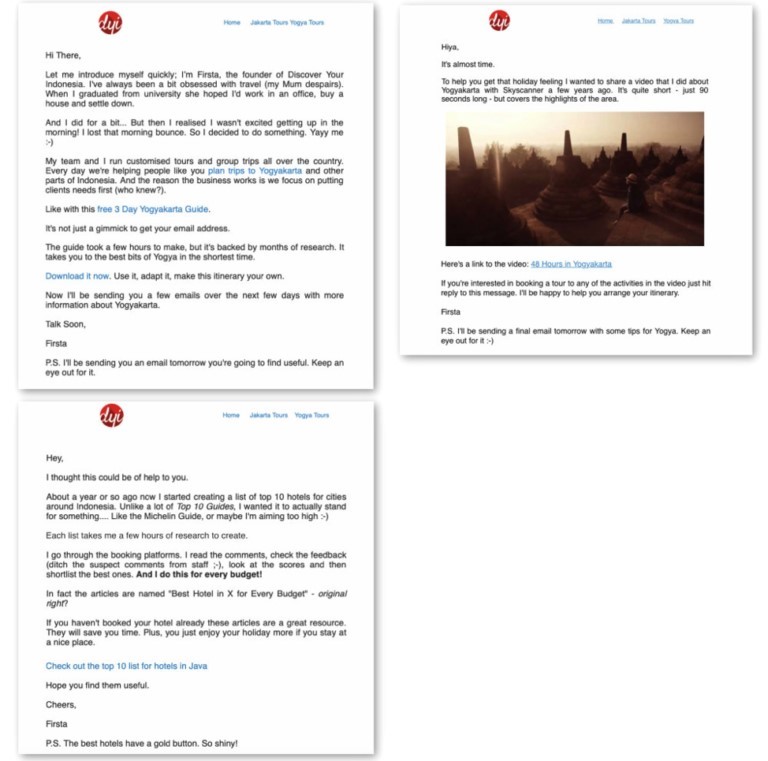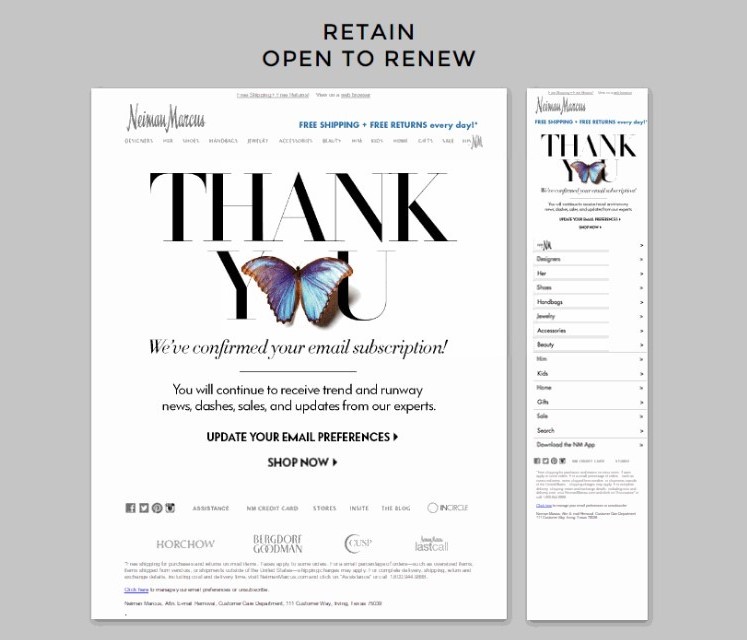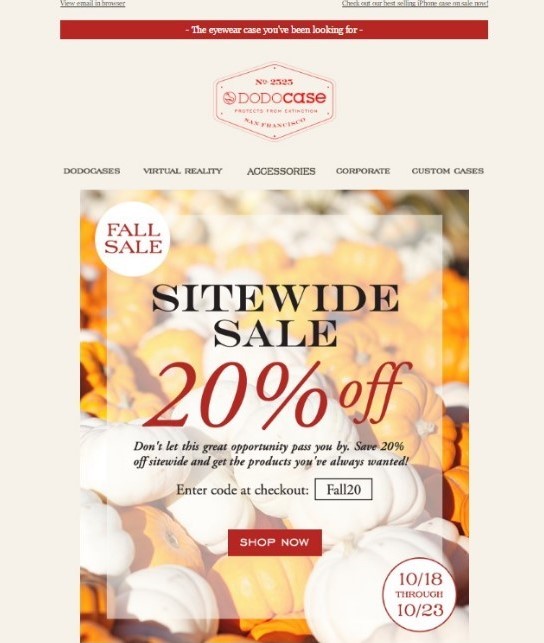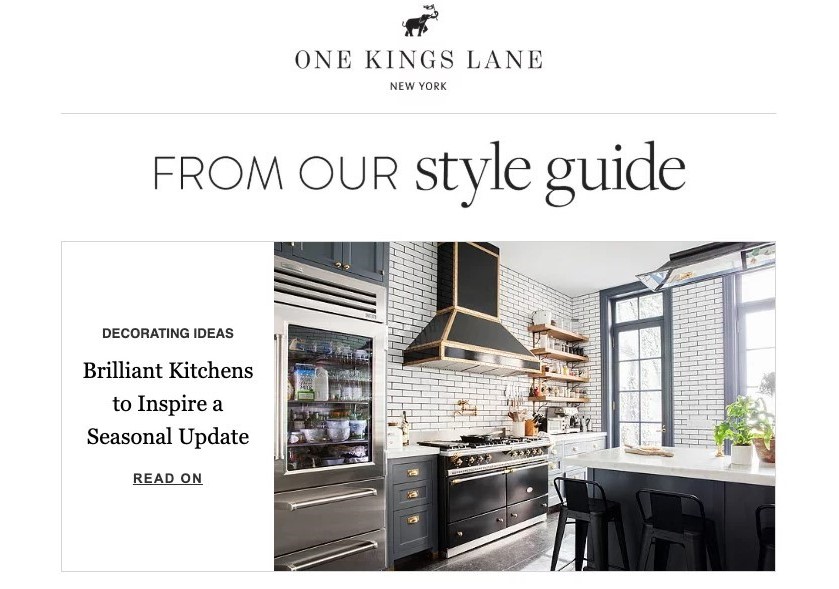For any e-commerce business to survive and to thrive, it needs to grow its customer base. Doing so involves reaching and acquiring new customers. It also means retaining those customers they’ve already got. Both customer acquisition and retention need well-planned, effective marketing.
There are numerous different marketing channels that businesses today can explore. Statistics collected by Profit Industry reveal that 91% of American consumers want to receive promotional emails from companies. They also show that almost 80% of small and medium-sized retailers ID email as the best channel for both customer acquisition and retention.
What’s more, email marketing has also been shown to assist with other channels. Well-known blog, Quick Sprout, has found that email subscribers are 3.9 times more likely to share their content via social media. That’s as compared to leads drawn from any other channel.
It’s critical that you get the most you can out of your email marketing. Not doing so is to neglect what should be your most lucrative channel. The best way to maximize your email marketing is by leveraging the best possible automated emails.
We’re going to point you to six types of automated email you need to send to boost your sales. Before we get to those, let’s take a moment to explain what email automation is and why it works.
What is Email Automation & Why Does it Work?
Like SEO, modern email marketing is far more sophisticated than it once was. No longer do you need to craft all your emails from scratch yourself. No longer do you have to rely on a scattershot strategy of sending your emails to your whole subscriber list.
The new generation of email marketing tools makes the process much simpler. Not to mention more effective. They let you send automated emails to certain leads at certain times. Different automated emails are triggered at different times or by specific events. For example, an email might be sent if a customer abandons your site with items still in their shopping cart.
Being set in light of specific events helps to make emails more relevant to their recipients. The emails are tailored to customers who have performed a specific action. They’re pitched exactly to meet the needs that prior experience will tell you they have.
That those automated emails reach people at exactly the right time is also key. Automation ensures that the right emails are sent when they’re likely to have the biggest impact. That has a profound knock-on effect on an e-commerce site’s sales. According to Venture Beat, automation can lead to as much as a 77% increase in a site’s conversions.
With such impressive returns possible, you’ll want to know how you can best use email automation. That’s where our 6 examples of invaluable automated emails come in.
Abandoned Cart Emails
It’s very common for online shoppers to add items to a shopping cart but then abandon a site before buying them. Sale Cycle data suggests that close to 80% of all online shopping carts end up being abandoned. Customers often get distracted. Some weren’t even intending on making an immediate purchase.
It doesn’t matter why carts are abandoned. What matters is that the value of the products in the carts could boost your sales figures instead. Abandoned cart emails are a way of recouping some of that lost value. They nurture customers who abandoned their carts and entice them back to you. The following is an example of an abandoned cart email from fashion brand, Rebel Circus:

One or a series of such emails can make a real difference to your overall sales. Business Insider suggests that savvy retailers can recoup 63% of the total value of abandoned carts. That’s why abandoned cart emails are a must for any e-commerce site.
The emails don’t need to be complicated. You can simply present them as a quick reminder for customers. To maximize their efficiency, you might also want to consider:
- Featuring relevant offers or discounts
- Creating a Fear of Missing Out (FOMO), by suggesting that stocks are running low or offers are soon to expire
- Adding real, positive reviews of products
- Including a feedback form asking why the customer abandoned in the first place.
Welcome Emails
Welcome emails are a simple yet effective email marketing tool. They’re sent when someone first signs up to an email list or when they make an initial purchase. Below is an example of a welcome email series from a travel company.

Online shoppers have come to expect such emails when they buy from a company. That’s the first reason why these automated emails are important. If you’re not sending them, customers might feel like something has gone wrong. They could cancel a payment or be less likely to buy from you in the future.
As an early point of contact with a customer, welcome emails also help to build a relationship. They’re greater for enhancing the image of your brand with a customer. They also encourage future engagement. There are a few things to keep in mind when designing welcome emails:
- Make sure they’re sent immediately after sign up or purchase. Customers are most likely to open them if they’re sure they relate directly to their purchase
- Don’t go for a hard sell; you’re building a relationship and don’t want to come on too strong
- Invite recipients to check out your blog or social media channels, to build cross-channel engagement.
After Sales Emails
These emails are like welcome emails but should go out to all your customers; new and old. They’re emails triggered by a purchase or subscription. They work to show customers that you appreciate their business. The Neiman Marcus email below clearly displays gratitude to a new subscriber:

The primary purpose of these emails is to show that you care about customer satisfaction. That you’re interested in customer happiness, even after you’ve got their cash. After-sales emails are where you should thank a customer for their business and ask for feedback.
These emails can help boost sales in a couple of ways. Recipients will develop a better opinion of your company. That will make them more likely to offer repeat business. Secondly, you can use the emails to get customer feedback. That feedback, in the form of positive reviews, is great for future marketing efforts.
To create the best after-sales emails, you should:
- Make saying thanks and showing gratitude to the customer the primary theme of the emails
- Ask straight out for a review and make it simple to submit one
- Include aftercare information, such as product FAQs or product maintenance details
- Nudge recipients toward repeat business by featuring some related products.
Win Back Emails
Over time, customers may drift away from your business. Even loyal ones who bought from you regularly and always opened your emails. Win back emails are automated emails that aim to do just that; win back those customers to your firm.
When done well, win back emails can be very effective. A recent Return Path study showed that nearly 50% of win-back email recipients will open and engage with future emails from the same business. The following email from blog Hubspot is an example of a win-back email done well:

The main thing to remember with win-back emails is who you’re sending them to. The audience for the emails has shown that they’re now less engaged with your firm. Your emails need to grab their attention and overcome their lethargy.
Because of that, the subject line of these emails is more important. It has to persuade a recipient to open the email and not delete it unread. Featuring a generous offer that’s too good to refuse is a good choice for your subject line. A personal style message like ‘We Miss You’ has also been shown to be effective.
Other things to keep in mind for these emails include:
- Make any offers easy to obtain. Don’t apply as many restrictions or limitations as you might otherwise
- Try to personalize win back emails according to prior customer history. That means what and when customers have bought from you before
- Test and try different win back email options. You never know which tactics might prove most fruitful.
Upselling Emails
There’s a common misapprehension that boosting sales only means getting new customers. In fact, selling more to existing customers is a very effective way of increasing revenue. Marketing Metrics statistics reveal that the probability of selling to an existing customer is 60% – 70%. That’s as opposed to 5% – 20% for a brand new prospect.
Automated email campaigns upselling to your customers can deliver great results. Using customer history and triggers, you can send out personalized and relevant upselling emails. The following is an example from eyewear company, Dodocase:

Those emails might advertise a range of products like those a customer has bought before. They might provide offers, such as free shipping if a customer’s next order exceeds a certain amount. The choice of exactly how they’re pitched is up to you, but the following are some tips to keep in mind:
- Showcase a selection of related products. Suggest the possibility of buying as a bundle or set
- Don’t overwhelm a customer by including too many products in one email
- Keep a customer’s budget in mind. If their usual orders with you total around £100, an offer related to a £1000 order threshold won’t appeal to them.
Educational & Informational Emails
Automated emails don’t have to sell in order to boost your sales. Providing useful info and educational content in emails can help you down the road. Such content builds rapport with your customers. It also improves their opinion of your brand. That makes them more open to buying from you in the future.
You have a number of options when it comes to these types of email. You might feature links to interesting blog posts, as in the below example from One Kings Lane:

Otherwise, you could offer guides to proper usage of your products. If you are going to send these types of automated emails:
- Make sure the content is useful. Try to provide information that customers don’t already know and tips they won’t already have thought of
- Focus on offering value in the form of insight and information. Sell products sparingly if at all
- Include some less conspicuous CTAs, to give customers the option to buy if they so choose.
About the Author
This is a guest post by Nick Brown, the co-founder of Accelerate Agency, an SEO agency in Bristol. He has over 12 years of experience in digital marketing and works with large companies advising them on SEO, CRO, and content marketing.





